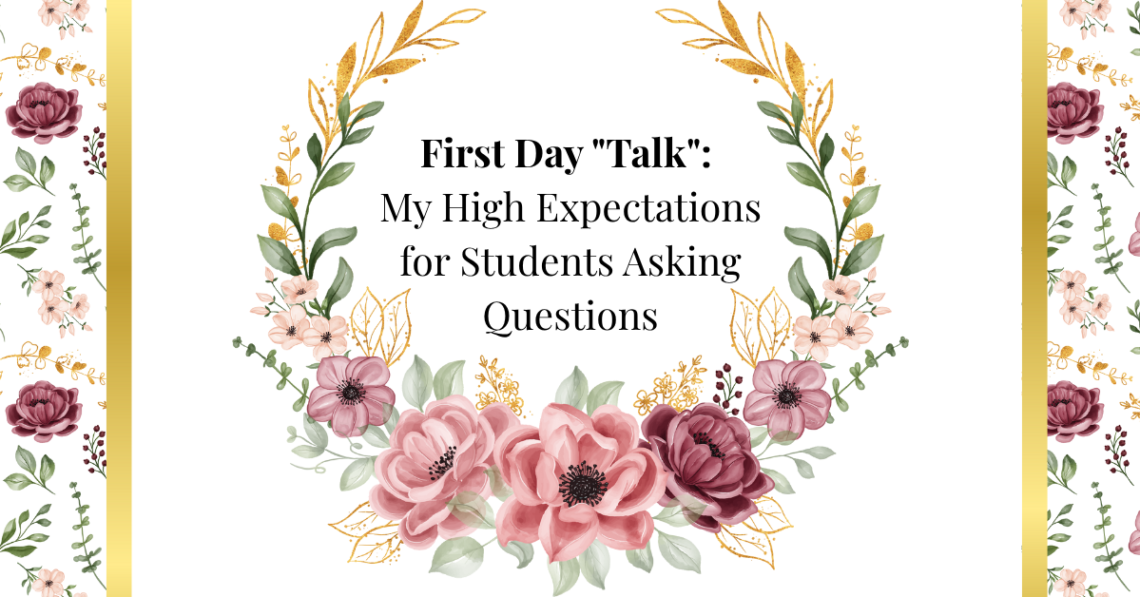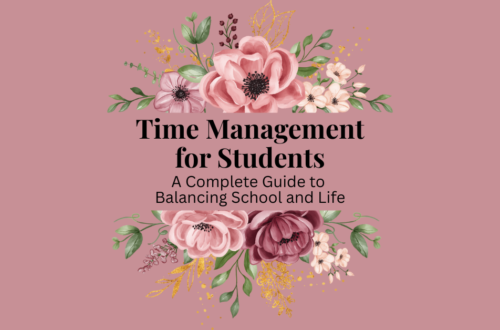The first day of school isn’t just about passing out syllabi or going over seating charts—it’s the foundation for everything that follows. As educators, we know that the way we begin sets the tone for the rest of the semester. That’s why I always start with a “Beginning of the Semester” talk. It’s not a lecture—it’s a conversation about how we’ll work together, what students can expect from me, and what I expect from them.
This intentional moment lays the groundwork for engagement, respect, and growth. By clearly outlining our classroom culture from the start, I’m not just managing behavior—I’m opening the door to a thriving, collaborative learning environment.
Why Setting Expectations from the Start Matters
There’s power in clarity. Students walk into our classrooms with nerves, questions, and assumptions. When we clearly communicate our expectations on day one, we take away the guesswork. This helps create a safe space where students know what’s coming and feel empowered to participate.
When students understand the “why” behind classroom routines and academic expectations, they are more likely to engage meaningfully. They recognize that this is a space where their voices matter and where curiosity is encouraged—not silenced.
Your Job as a Teacher
On the first day, I explain my role in the classroom. I’m here to guide, support, and challenge them. I’m not just the person handing out assignments—I’m a resource, a coach, and an advocate for their success.
I make it clear that I want them to ask questions—lots of them. Questions mean they’re thinking, processing, and trying. I let them know that confusion is part of learning and that they are never alone in that process. When students see that I’m approachable and willing to help, it sets a tone of trust and open communication from the start.
The Student’s Job
Just as I explain my responsibilities, I talk about theirs. Every student in my room has a job: to participate actively. That means asking questions, contributing to class discussions, completing work, and being present—not just physically, but mentally.
I tell them, “Your job is to be curious.” I emphasize that asking questions is not a weakness—it’s a strength. Students who advocate for themselves learn more and build confidence. I celebrate curiosity and make it a core classroom value.
Creating a Safe Space for Questions and Engagement
Students won’t ask questions if they feel judged or ignored. That’s why I intentionally build a classroom culture where every student feels safe to speak up. I use strategies like:
- The “Question of the Day”: a low-pressure, warm-up question that gets everyone thinking and sharing.
- Anonymous question box: for students who are shy or anxious but still need clarity.
- Multiple response formats: some students prefer to write, others to speak—so I give them options.
I also make sure to affirm every question asked. I thank students for speaking up and often say, “I’m glad you asked that—others were probably wondering the same thing.” This small gesture builds confidence across the room.
Setting the Standard for Engagement
Of course, setting expectations on day one is only the beginning. Throughout the semester, I reinforce these values consistently. I model engagement by being present, passionate, and prepared—and I expect the same from my students.
We revisit our classroom norms often and adjust when necessary. I encourage ongoing dialogue, ask for feedback, and reflect with the class on what’s working and what isn’t. This ongoing conversation keeps students involved and invested in their learning journey.
Conclusion & Call to Action
Setting clear expectations on the first day isn’t about control—it’s about connection. When students know what’s expected, they feel more confident, engaged, and willing to grow.
If you’ve never tried a “Beginning of the Semester” talk, consider making it part of your first day this year. Let students know their voice matters and that this is a place for learning, growing, and asking bold questions.
How do you set the tone in your classroom on day one? I’d love to hear your strategies—share them in the comments below!





